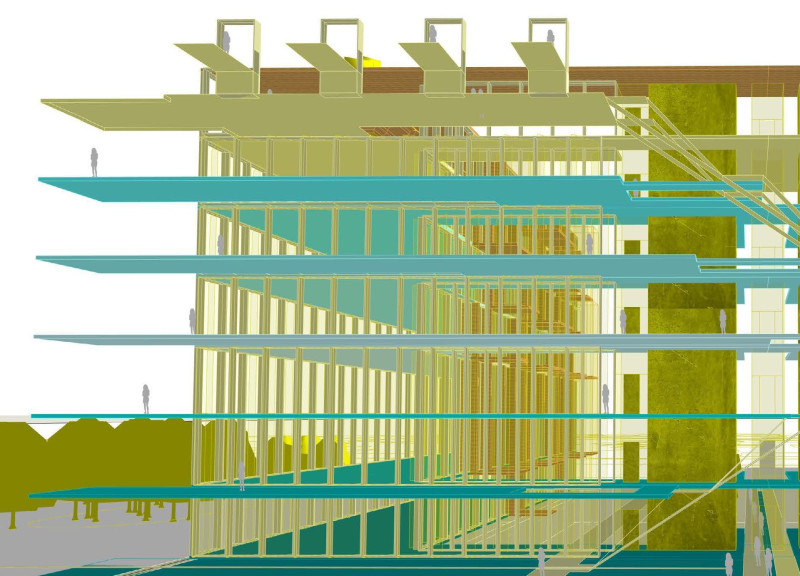5 key facts about this project
This architectural project functions primarily as a mixed-use development, accommodating a variety of activities within its walls. The design cleverly integrates residential, commercial, and communal spaces, fostering a vibrant atmosphere that encourages interaction among its users. Such an approach not only fulfills practical requirements but also enhances the overall quality of life by promoting community engagement and connectivity.
At the heart of this design lies a carefully considered spatial organization. The layout is intuitive, seamlessly guiding visitors through different functional areas while maintaining a sense of coherence. Key elements include open-plan living spaces that allow for flexibility and adaptability, catering to diverse lifestyle needs. This fluid design not only maximizes natural light and ventilation but also creates a welcoming ambiance that encapsulates modern living.
The architectural design features a notable emphasis on materiality, where the choice of materials plays a vital role in establishing a relationship between the building and its environment. Predominantly, the project employs a palette that includes sustainably sourced timber, resilient concrete, and expansive glass facades. These materials not only enhance the visual appeal but also contribute to the building's energy efficiency and longevity, reflecting contemporary concerns about sustainability.
One of the most distinctive aspects of the project is its innovative approach to integrating green spaces. Landscaped terraces and communal gardens provide essential green cover, promoting well-being among the residents and contributing to urban biodiversity. This incorporation of nature within the architectural framework highlights a comprehensive understanding of how green areas can improve the living conditions in urban settings.
Structurally, the project showcases advanced engineering techniques that ensure stability and durability while maintaining aesthetic simplicity. The design emphasizes horizontal lines and gentle curves, harmoniously blending with the skyline and creating visual continuity with the surrounding architecture. This attention to balance and form results in a cohesive and engaging structure that complements its location.
Moreover, the use of technology in the construction process is worth noting. Smart building systems have been integrated to optimize energy use, monitor conditions, and enhance overall user experience. By prioritizing sustainability and efficiency, the design underscores a forward-thinking approach that not only meets current needs but anticipates future demands.
The architectural details are equally noteworthy, with elements such as overhangs and shading devices strategically positioned to minimize solar heat gain, thereby enhancing interior comfort. These thoughtful design choices manifest a comprehensive understanding of environmental factors, demonstrating how architecture can respond to and take advantage of its climatic conditions.
In summary, this architectural project stands as a testament to thoughtful design that prioritizes function, sustainability, and community engagement. Its detailed execution reflects a harmonious balance between modern aesthetics and practical living, ultimately creating a space that is both inviting and functional. For those interested in diving deeper into its nuances, exploring architectural plans, sections, and innovative design ideas will offer further insights into this compelling project. Engage with the presentation to discover the full depth of the architectural concepts that define this development.


 Mai Salman Mustafa Abu-shanab
Mai Salman Mustafa Abu-shanab 























